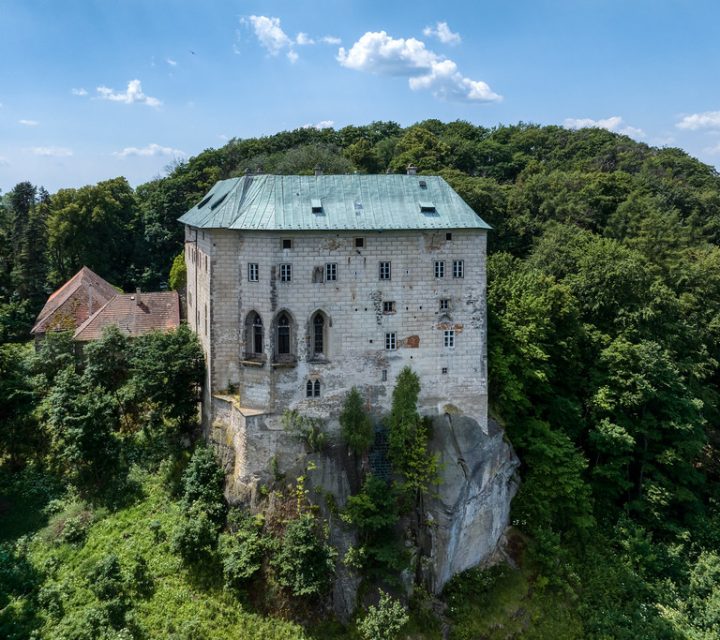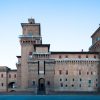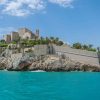Houska Castle
Houska Castle, located in the Czech Republic, holds a reputation as one of Europe’s most enigmatic castles. The structure draws attention for its Gothic architecture. Its eerie history adds to its appeal. Built in the 13th century, Houska Castle has long been linked to legends, mysteries, and tales of supernatural phenomena. This makes it a popular destination for those interested in both history and the paranormal. Many believe it was constructed not as a fortress or noble residence. Instead, it may have been built to contain or guard something sinister. Both visitors and researchers find themselves fascinated by its mysterious past. They are captivated by its reputed connections to otherworldly forces.
Location of Houska Castle
Nestled in the Central Bohemian Region of the Czech Republic, Houska Castle stands near the village of Blatce. It is approximately 47 kilometers north of Prague. The castle sits atop a rocky cliff, surrounded by dense woodlands. Its setting in natural beauty contrasts starkly with its ominous reputation. The secluded location lies far from major trade routes. It also lacks typical medieval defensive structures, fueling speculation regarding its original purpose. Positioned away from strategic or populated areas, the castle raises questions about its isolated construction. This uniqueness only adds to its mystery.
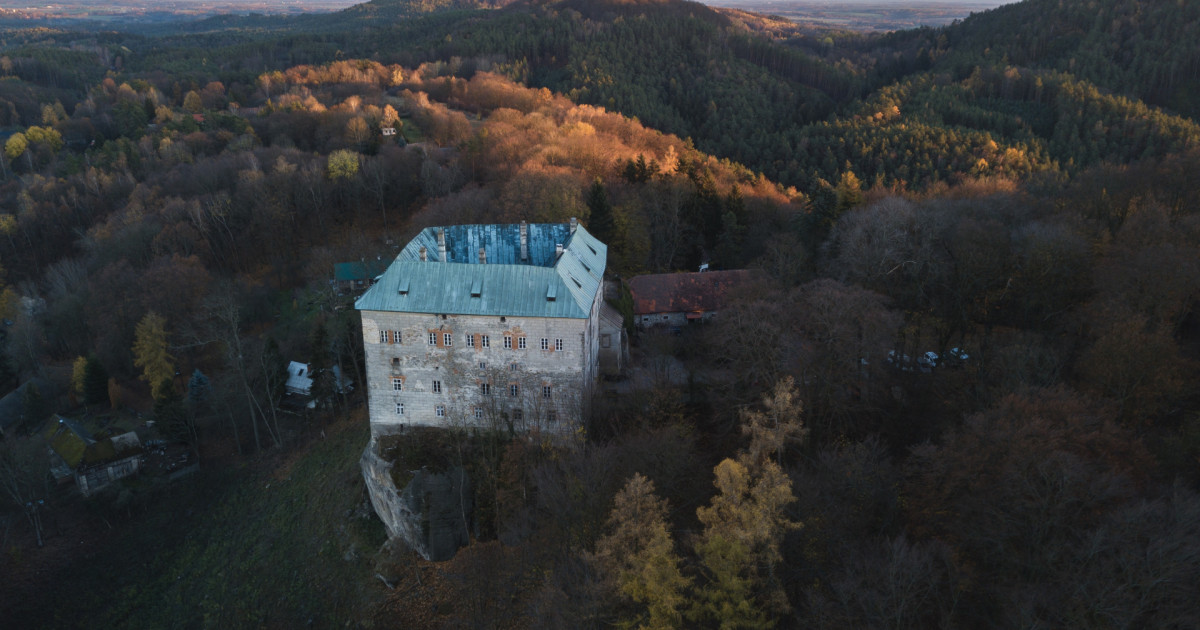
History of Houska Castle
Houska Castle’s history begins in the 13th century during the reign of King Ottokar II of Bohemia. The king commissioned its construction. Built in Gothic style, the castle later incorporated Renaissance and Baroque elements as it underwent renovations. While most castles of the period served strategic purposes—whether as fortifications or noble residences—Houska Castle lacks these characteristics. Its absence of defensive features, such as moats or ditches, and its remote location away from vital trade routes lead many historians to question its true purpose.
Local legends suggest that builders did not construct the castle to defend the region. Instead, they may have designed it to contain a mysterious and potentially dangerous element. Folklore tells of a large, bottomless hole beneath the castle, rumored to be a “gateway to Hell.” The pit was considered a source of evil. It was believed to contain dark, supernatural forces, and stories suggest that the castle’s construction aimed to seal it off. Various folklore accounts describe terrifying creatures emerging from the hole, including winged beings and demonic apparitions. These beings struck fear in the local population. According to these tales, King Ottokar II ordered the castle’s construction to prevent these entities from escaping into the world.
Throughout the centuries, Houska Castle changed hands and underwent multiple renovations. Yet, stories of strange occurrences persisted. During World War II, the Nazis occupied the castle and allegedly conducted secret experiments there. They were drawn, perhaps, by its dark reputation and supposed supernatural energies. After the war, interest in Houska’s mysterious history continued to grow. Numerous accounts of paranormal activity arose that persist to this day.
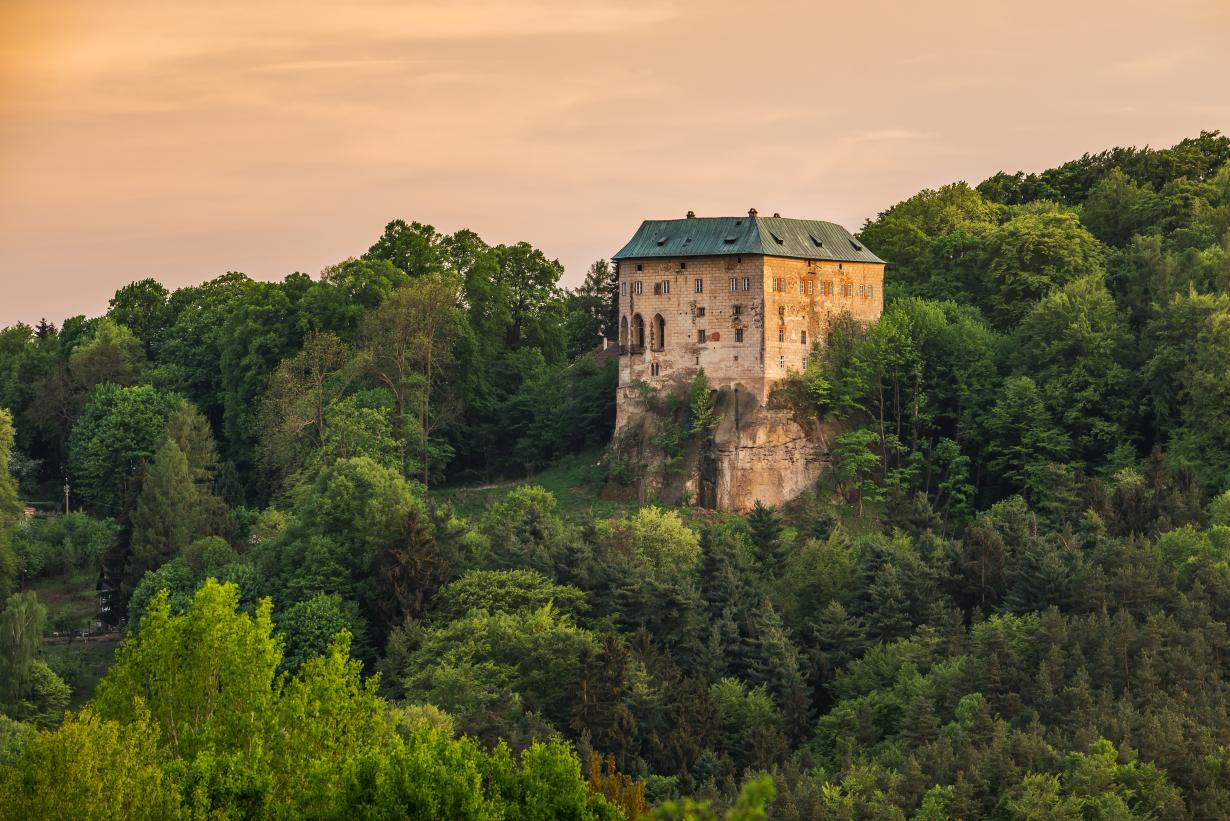
Current status
Today, Houska Castle attracts both tourists and paranormal enthusiasts from around the world. Although privately owned, it opens to the public for guided tours. Visitors can explore its intriguing architecture and eerie chambers. The chapel, which covers the alleged gateway to Hell, remains one of the main attractions. It features frescoes depicting the archangel Michael battling a dragon. This further enhances the site’s mystique. In recent years, paranormal investigations have occurred within the castle. Many investigators report encounters with unexplained phenomena. These include sudden temperature drops, unusual sounds, and even apparitions.
The castle’s current owners have worked to maintain it in excellent condition. They have preserved both its architectural integrity and its mysterious allure. Tour guides elaborate on the legends surrounding Houska. They share tales of hauntings and ghostly sightings with visitors. Efforts to retain as much of the original medieval structure as possible show careful balance. Renovation decisions have been carefully balanced with preservation and historical accuracy. The rooms feature period-appropriate décor, while the grounds around the castle are well-kept. Visitors are treated to scenic views that contrast with the dark stories associated with Houska’s past.
Visitors often remark on the castle’s eerie atmosphere. The feeling is particularly strong in areas like the chapel and dungeon. Those who arrive with curiosity frequently leave with a sense of unease. It seems as if Houska’s long history continues to cast a shadow over its halls. The mysterious reputation of the castle endures, and Houska Castle stands as a unique piece of Bohemian history. It captures Europe’s rich yet often enigmatic medieval heritage.
Admission
Community features
Castle features
Video
Location
Official website
Featured listings



